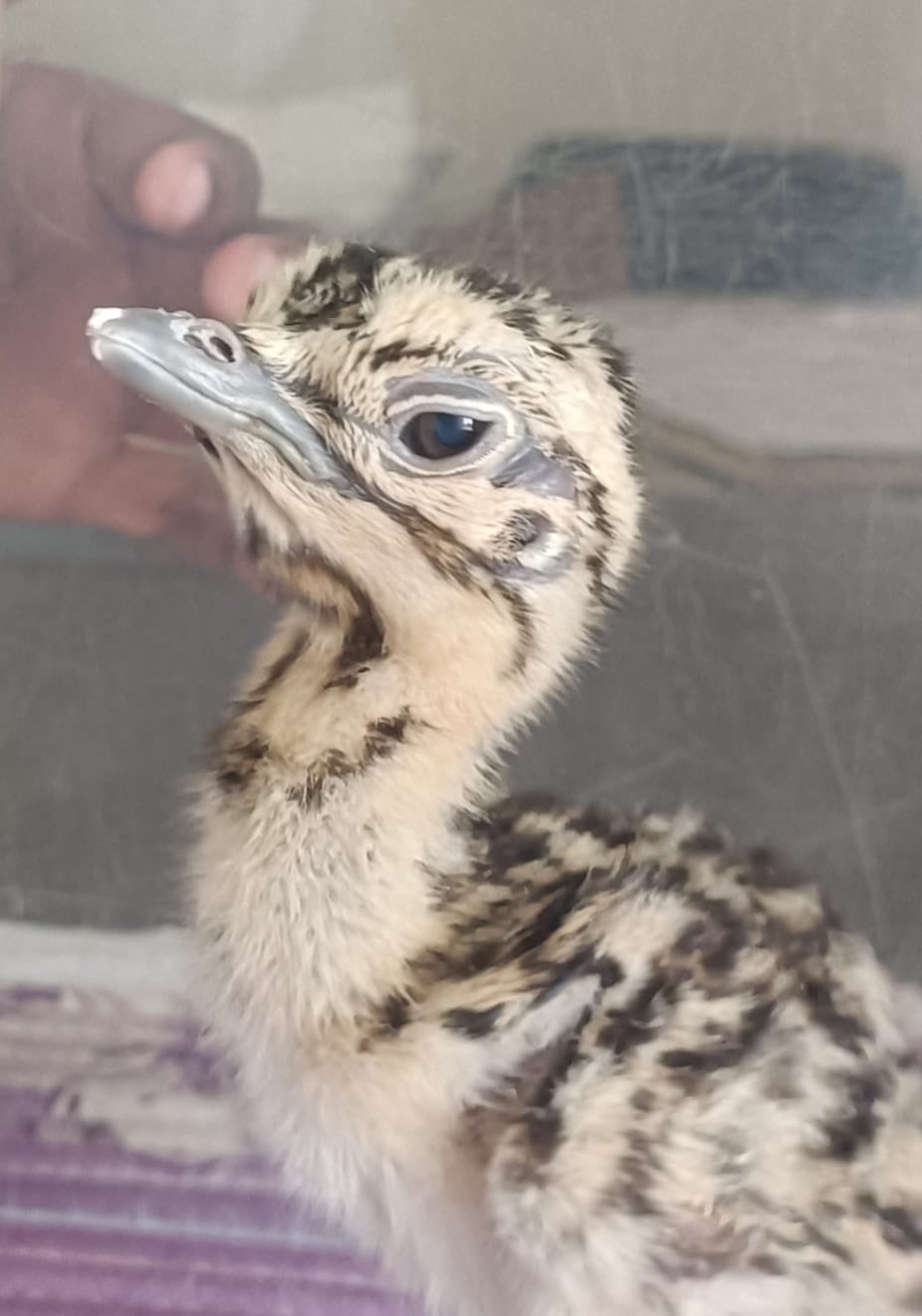A new beginning for the endangered Great Indian Bustard as the first captive-bred chick of 2024 hatched at the Sudasari Desert National Park Conservation Breeding Centre (CBC) at SAM in Jaisalmer, Rajasthan.
https://twitter.com/wii_india/status/1777180416648331766
“The egg hatched after 22 days of artificial incubation at Sam CBC, marking a significant step in the conservation of the Great Indian Bustard (GIB),” the Rajasthan Forest Department said in a post on X.
https://twitter.com/ForestRajasthan/status/1776233375965270174
Toni laid the season’s first fertile egg on March 11, which was then incubated to foster the next generation of GIB, it further added.
In an effort to conserve the GIB species, in 2024, the first successful breeding attempt happened on March 6 between Leo (male) and Toni (female). This marked the initiation of captive breeding of GIBs for the current year and the third captive produced chick of the species.
A conservation breeding program for the critically endangered GIB is running in Jaisalmer since 2019. It is a joint effort of Ministry of Environment, Forest, and Climate Change (MoEFCC), Rajasthan Forest Department (RFD), and Wildlife Institute of India (WII).
The conservation breeding centres (CBCs) are located in Sam and Ramdevra. The Sam centre established in 2019 is home to 16 GIBs and the Ramdevra Centre operationalised in 2022 houses 13 GIBs.
The Great Indian Bustard
There are around 150 GIB left across the country, as of August 2023, as per the Ministry of Environment data. Bustard, a large, terrestrial bird, mainly lives in dry grassland areas and can easily be distinguished by its black crown on the forehead contrasting with the pale neck and head. These have a brownish body, and the wings are marked with black, brown, and grey.
According to a study conducted by the Wildlife Institute of India, there are a total of 150 of the bird species, of which 128 are in Rajasthan. Meanwhile, the states of Gujarat, Maharashtra, Andhra Pradesh, and Karnataka account for less than 10 birds each.
A state bird of Rajasthan, Great Indian Bustard, has been listed in Schedule I of the Indian Wildlife (Protection)Act, 1972, and is provided the highest degree of legal protection from hunting.
It is also enlisted in Appendix I of CITES, as Critically Endangered on the IUCN Red List and the National Wildlife Action Plan (2002-2016). The Ministry of Environment also identified it as a species for the recovery programme under the Integrated Development of Wildlife Habitats.
These birds face the threat of excessive hunting, habitat loss, compounded with very slow life-history traits, all of which have caused a decline in their population.














